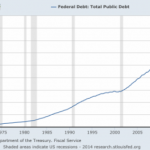Forex markets offer very high leverage
- Both potential return & risk are higher as a result.
Lot sizes
- Pairs are usually traded in 100.000 unit standard lots or 10.000 unit mini lots.
- Example for a standard lot purchase: If the EUR/USD quote was 1.3764/1.3767, then buying an EUR/USD pair means buying 100,000 Euro’s and selling short 137,670 US dollars.
Pip Value
- For a standard lot in which the USD is the counter currency, 1 pip will equal $10 ($1 for a mini lot). For other major counter currency pairs 1 pip will range from $8 to $10.
Lets talk about leverage and margin. This is a very unique aspect of the Forex markets where the markets offer very high leverage. Both potential return and risk are higher as a result, so you have to be very, very careful when trading the forex markets and only trade with a good trading method and with discipline.
The high leverage, while it can really help you with tremendous profits, can also work against you with tremendous risk. You really have to have a good method, good risk management principles, and good discipline, If you do not have that, you should not be trading to begin with. By the time you are done with my course, we are going to make sure that you do have there important elements.
With regard to lot sizes, pairs are usually traded in 100000 unit standard lots or 10000 unit mini lots. For example, for a standard lot purchase, if the EUR/USD quote was 1,3764-67, then buying a EUR/USD pair means you are buying $100000 Euros, and you are simultaneous selling short $137.670 US dollars.
The pip value for a standard lot in which the US dollar is the counter currency, as it is in the EUR/USD pair, one pip will equal ten dollar. For a mini lot, one pip will equal one dollar.
For other major counter currency pairs, one pip will range from eighth to ten dollars. This would be the case for the USD/JPY or the USD/CHF or the USD/CAD.
Forex dealers offer leverage as high as 50:1 (USA) and 100:1 (non-US), please note that higher
values do exist as high as 500:1 but lets stay with the two common: 50:1 and 100:1 as examples.
� 1 standard lot pair in which the USD is the base currency would require:
100:1 – $1000 in margin ($100.000/100)
50:1 – $2000 in margin ($100.000/50)
� 1 mini lot pair would require:
100:1 – $100 in margin ($10.000/100)
50:1 – $200 in margin ($10.000/50)
If the account value falls below the margin requirement, the dealer will close out the trade
automatically.
Forex dealers offer leverage offer leverage as high as 50:1 in accordance with CFTC regulations in the United States ( other countries have other regulations) and even higher. 100:1 outside US. That one standard lot pair in which the U.S Dollar is the base currency would require $1000 in margin – $100.000 divided by $1000 – if trading through a broker outside of the United States.
If trading within United State (We living in Europe do not need it),one standard lot would require $2000 in margin because at that point, the $100.000 value of a standard lot would be divided by 50.
So if you’re within U.S, it’s 50:1, $2000 margin; outside the U.S. could be 100:1, $1000 margin.
One mini lot pair would require $100 in margin when trading outside the U.S. through a non-U.S broker. That would be $10.000, which is the value of one mini lot divided by 100. For trading through U. S. brokers at a 50:1 leverage, one mini lot would require $200 in margin, or $10.000 divided by 50.
Regardless, when trading Forex the way I will teach you, you will not need 100:1 leverage, nor will you need 50:1 leverage because any trader trading at those levels will be overtrading and exposing this/her account to needless risk, and you never want to do that.
Never think that you’re going to trade at 100:1 or 50:1. You’re more than likely going to be at 4:1 or 5:1, or maybe as high as 10:1, that’s it.
That’s good news. You’re not concerned about the leverage except that you don’t want to overtrade.
Here is where so many traders get into real trouble because they do overtrade. I’m not going to let you do that.
If the account value falls below the margin requirement, which would only happen if you were overtrading, the dealer will close out trade automatically. What does that mean? It ensures that at least your account will not go negative.
As I said, We’re not interested in getting anywhere near that, so don’t let the leverage issue become an issue because it is not trading with the prudent style that I teach you. You’ll never have to worry about leverage.
